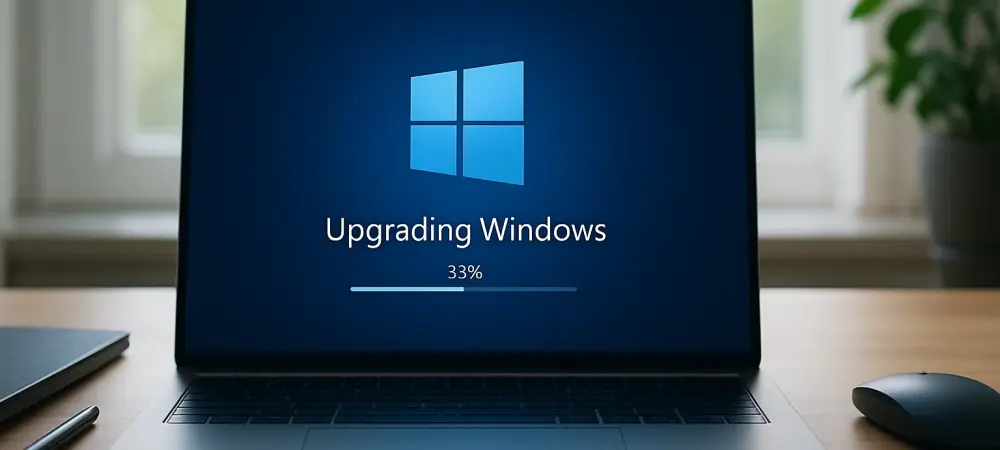In a world where digital infrastructure underpins critical operations, the transition to Windows 11 stands as a formidable hurdle for industries tethered to legacy systems, especially as Windows 10 nears its end-of-life. Sectors like healthcare, manufacturing, and maritime face a pressing need to upgrade, yet the path is fraught with obstacles. A staggering number of organizations report compatibility issues and operational disruptions, raising questions about readiness for this shift. This review delves into the intricacies of adopting Windows 11, examining its technical demands, industry-specific impacts, and strategic implications for businesses striving to balance innovation with stability.
Key Features and Technical Demands
Hardware Requirements and Limitations
Windows 11 introduces stringent hardware prerequisites that pose significant barriers for many organizations. Older devices, particularly in specialized sectors, often lack the necessary processors or firmware support, such as Trusted Platform Module (TPM) 2.0, to meet the new standards. Industrial vendors have flagged models like Rockwell’s ASEM 6300P and 6300B as incompatible, highlighting a widespread issue where legacy hardware cannot support the upgrade without costly replacements.
Beyond the basic specifications, the challenge extends to the integration of hardware in unique environments. In healthcare, for instance, equipment like MRI scanners and diagnostic tools often rely on embedded systems tied to specific Windows versions. Upgrading these systems risks disrupting critical functionality, forcing organizations to weigh the benefits of modernization against potential downtime or equipment obsolescence.
Software Compatibility and Integration
Equally daunting are the software compatibility issues that accompany Windows 11. Many industries depend on custom applications or legacy software tailored to older operating systems, and transitioning to the new platform often requires extensive redevelopment or updates from vendors. This process can be particularly arduous in settings where software is deeply integrated with hardware, demanding rigorous testing to ensure seamless operation.
In environments with strict regulatory oversight, such as medical facilities, the validation of software updates adds another layer of complexity. Each change must undergo thorough evaluation to confirm compliance with standards, often involving external parties and significant time investments. The result is a delayed upgrade cycle, leaving systems vulnerable as support for older platforms wanes.
Performance Across Industries
Healthcare Sector Challenges
The healthcare industry exemplifies the acute difficulties of adopting Windows 11, where patient care hinges on uninterrupted system performance. Hospitals and clinics frequently operate on isolated networks with stringent management protocols, meaning any upgrade must be meticulously planned to avoid compromising critical operations. Reports of trusts struggling with unsupported devices underscore the scale of this issue, as even recent equipment may lack compatibility.
Financial burdens further complicate the scenario, with upgrade costs for integrated medical devices often reaching exorbitant levels. Some organizations face quotes in the tens of thousands for a single device, pushing budget constraints to the limit. This economic strain forces a difficult choice between maintaining outdated systems at the risk of security gaps or investing heavily in compliant technology.
Industrial and Maritime Sectors
Industrial manufacturing encounters parallel challenges, as production lines rely on older processors and control systems that fail to meet Windows 11 requirements. The incompatibility of critical machinery disrupts upgrade timelines, with vendors often unable to provide immediate solutions. This stagnation risks operational inefficiencies and heightened exposure to cyber threats as support for legacy systems diminishes.
In the maritime sector, adoption lags even further, driven by concerns over cybersecurity and the unique operational constraints of vessel-based systems. Research indicates a significant portion of ships remain on older Windows versions, amplifying vulnerabilities in an industry already targeted by digital threats. The slow pace of transition reflects a cautious approach, prioritizing stability over rapid modernization despite looming risks.
Strategic and Economic Considerations
The financial implications of upgrading to Windows 11 cannot be overstated, particularly for industries managing high-value assets. Replacing non-compliant equipment, such as advanced medical imaging tools costing millions, often proves more feasible than retrofitting existing systems. This reality creates a strategic dilemma, as organizations must allocate substantial budgets to modernization while grappling with the immediate costs of professional services and vendor support.
Temporary solutions offer some respite, with options like third-party security services and Microsoft’s Windows 10 IoT edition extending support for legacy systems until 2032. These measures provide a buffer for planning, yet they do not address the underlying need for long-term compatibility. Decision-makers must navigate this interim period, balancing short-term operational needs against the inevitable push toward full adoption.
Final Thoughts and Next Steps
Reflecting on this evaluation, the journey to Windows 11 adoption reveals a landscape marked by technical hurdles and economic trade-offs. Industries face persistent barriers in hardware and software compatibility, while the slow pace of transition exposes lingering vulnerabilities. The review highlights a critical tension between maintaining operational continuity and embracing necessary technological advancements.
Looking ahead, organizations should prioritize comprehensive assessments of their current systems to identify upgrade pathways. Collaborating with vendors to develop tailored solutions can mitigate compatibility issues, while exploring funding mechanisms may ease financial pressures. Additionally, leveraging extended support options provides breathing room to strategize, ensuring a smoother shift to modern platforms without sacrificing stability.

